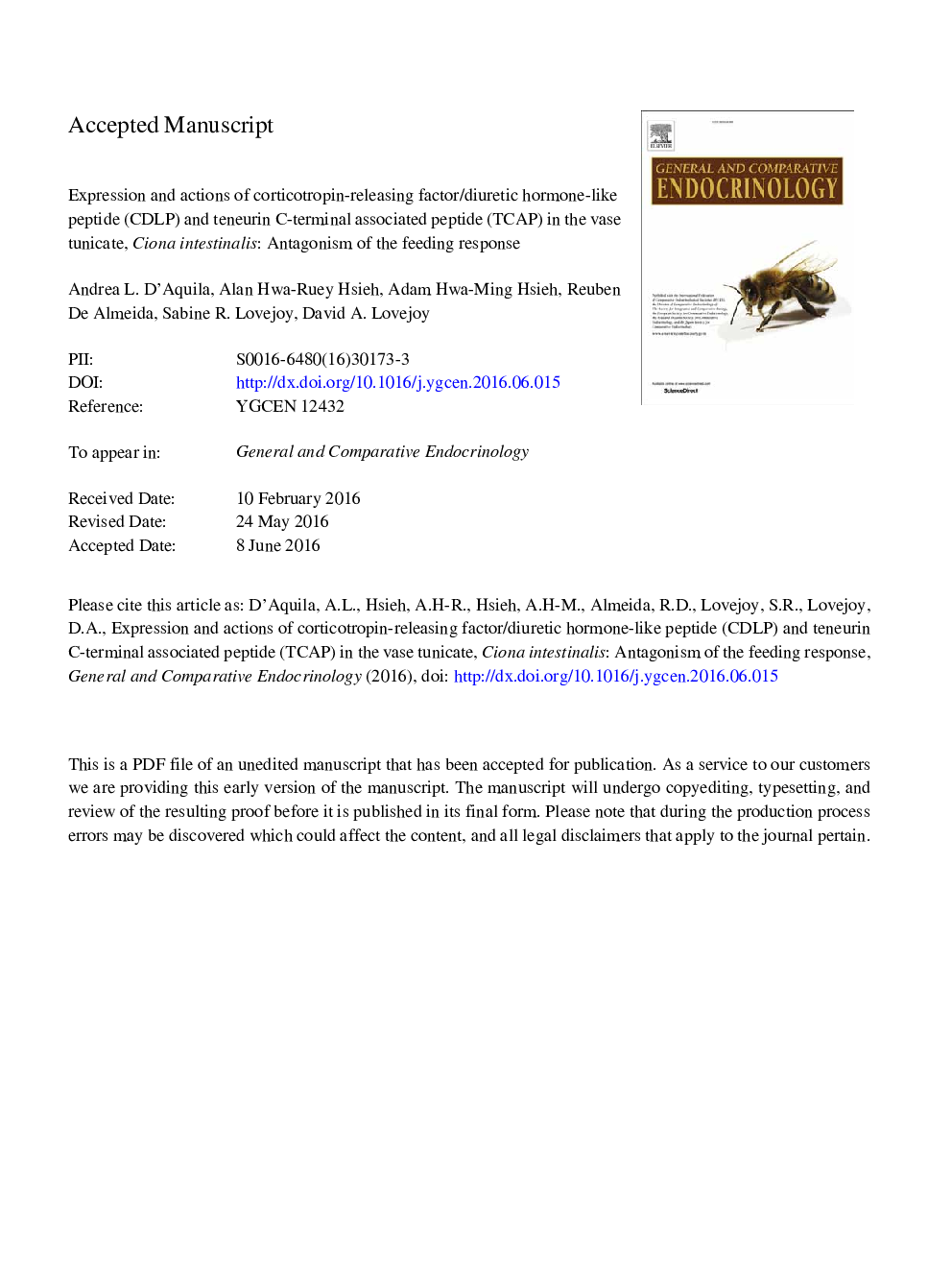| کد مقاله | کد نشریه | سال انتشار | مقاله انگلیسی | نسخه تمام متن |
|---|---|---|---|---|
| 5587745 | 1568861 | 2017 | 34 صفحه PDF | دانلود رایگان |
عنوان انگلیسی مقاله ISI
Expression and actions of corticotropin-releasing factor/diuretic hormone-like peptide (CDLP) and teneurin C-terminal associated peptide (TCAP) in the vase tunicate, Ciona intestinalis: Antagonism of the feeding response
دانلود مقاله + سفارش ترجمه
دانلود مقاله ISI انگلیسی
رایگان برای ایرانیان
کلمات کلیدی
موضوعات مرتبط
علوم زیستی و بیوفناوری
بیوشیمی، ژنتیک و زیست شناسی مولکولی
علوم غدد
پیش نمایش صفحه اول مقاله

چکیده انگلیسی
Teneurin C-terminal associated peptide (TCAP) is a neuropeptide that bears some structural similarity to the corticotropin-releasing factor (CRF) family of peptides. TCAP and CRF are both implicated in the regulation of stress-related behaviors, as established in rodent models. However, in vertebrates, both TCAP and CRF possess three additional paralogous forms making vertebrate models difficult to assess with respect to TCAP-CRF interaction. As a urochordate, this species possesses single homologs of TCAP and of a CRF/Diuretic-like peptide (CDLP) in the genome, thereby establishing Ciona intestinalis as an excellent model organism to examine the interaction of these peptide systems. However, the lack of C. intestinalis synthetic peptides and specific antisera has complicated experimentation. We, therefore, prepared synthetic versions of CDLP and TCAP to prepare specific antisera and to investigate their bioactivity in this species. To analyze stress-related behaviors, a novel behavioral assay was used to characterize different types of contraction-based behaviors, using buccal opening contractions, cloacal opening contractions, lateral contractions, longitudinal contractions and expulsions. Protein and mRNA expression data indicate that the mature versions of both peptides are present in a number of tissues. With respect to behavioral activity, both TCAP- and CDLP-treated animals had distinct contraction profiles under ambient conditions. Moreover, food stimulation tests revealed that whereas CDLP-treated animals displayed a strong expulsion behavior in response to feeding, TCAP-treated animals did not show this effect. These actions are consistent with previous studies done in vertebrates.
ناشر
Database: Elsevier - ScienceDirect (ساینس دایرکت)
Journal: General and Comparative Endocrinology - Volume 246, 15 May 2017, Pages 105-115
Journal: General and Comparative Endocrinology - Volume 246, 15 May 2017, Pages 105-115
نویسندگان
Andrea L. D'Aquila, Alan Hwa-Ruey Hsieh, Adam Hwa-Ming Hsieh, Reuben De Almeida, Sabine R. Lovejoy, David A. Lovejoy,